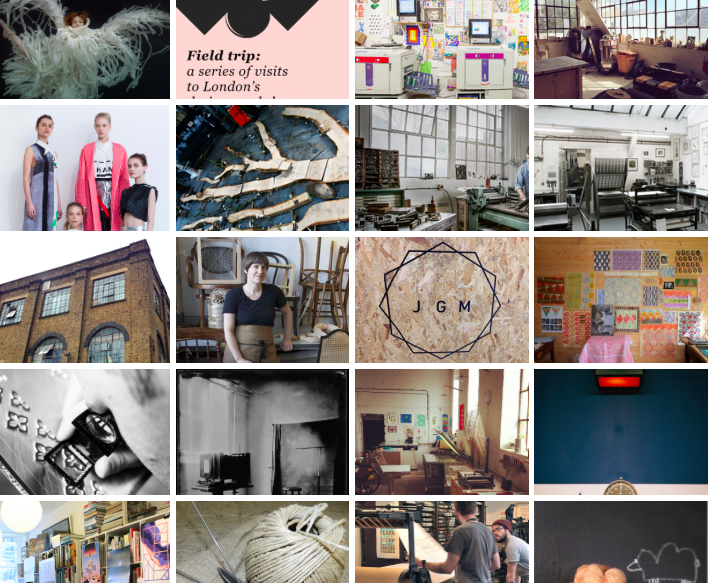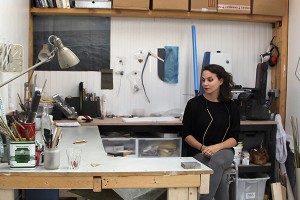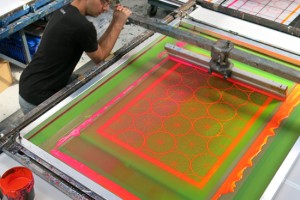How to beat sustainability overwhelm
Just Got Made • 07 Jan 2020
As we canter into 2020, certain things have become clear.
The obvious truth is that it’s no longer acceptable to be making goods and products in ways that harm our planet or the workers that make them. More of us than ever before are exploring new ways to include sustainable thinking and ethical production in our businesses.
But what happens if this starts to freeze up your creativity? What if it’s holding you back from making new work or getting projects out there?
Is it possible to suffer from sustainability overwhelm in your business??
Here at Just Got Made HQ we think you absolutely should continue to make your fabulous products (and here’s why ). But there is also no doubt that we do need to take on board responsibility for what we create and how we do it. So, through mentoring sessions and workshops last year we came up with a simple methodology that any creative small business can use to make decisions and crack on, without the overwhelm.
1. Accept that there are many ways to make a difference
Let’s start with the truth about sustainable and ethical production: “sustainable production, ethical products, locally made”; none of these terms have a singular, binary definition of what they mean. To put it simply, what they mean to you, may not be the same as what they mean to me.
To be successful, you need to get real and informed about what “being more sustainable” or “creating ethical products” actually means to you and your business. Remember, there is no one solution to get right (or wrong). So many of us become frozen into inaction because we feel like we can’t do enough, or we can’t do it perfectly, but please, get rid of this mindset now, and move straight into step two.
2. Define what sustainability means to you
Your next step is to have a look at all the possibilities open to you, and what might happen in the future.
Get a notebook, and on a fresh page start writing a list of all the possible changes you could make in your business that would improve your sustainable and ethical production. There are hundreds of ways to make a difference. At this point be bold and put every idea on the page.
Your list might include areas such as:
Environmental impact (e.g. What is the origin and impact of your material choices? How could you reduce waste? Is your packaging environmentally sound?)
Social considerations (e.g. are people in your supply chain paid a fair wage and are they safe at work? Could you employ local people or work with a marginalised group?)
And other considerations unique to you (e.g. Could you preserve a craft or skill? Could you donate to a cause? Do you offer repair services to prolong your products live?)
If you get stuck, try talking to other makers, looking at other brands you love to see what they are doing, and of course, talk to your customers!
3. Refine that brain dump
Remember that bit in the title about beating overwhelm? This step is vital.
Looking at the whole list:
– Circle 1 -3 ideas that make you dead excited, and that you can to start working on immediately, you WANT THIS CHANGE to be part of your business THIS YEAR!
– Circle 1- 3 ideas that excite you in the longer term. This may be more complex ideas or changes that you would have to consider, or be in a different place financially, but that you’d love to achieve one day.
Now refine this circled list again and pick the top three ideas that resonate with you most. Choose a mix of long and short term ideas. This forms the basis of creating your sustainability goals!
EXTRA: It may help you to write the points out again as if they were goals: i.e. an action you will take, ideally with an idea of time frame.
For Example:
I will eliminate all plastic and non-recyclable packaging from the business by the end of the year.
I’ll review our use of printing inks across all products, and look for a non-toxic alternative.
I’ll create a new product from our waste silk offcuts for the Christmas period
4. Review and Commit
If this is to be a long-term change and commitment to action, then it’s, of course, a big decision to make.
Put your three new goals away in a drawer and set a reminder to take the page out again in a week. How do you feel about them now? Are they too broad and should you narrow it down? Is something missing that is more important? Are you still really happy and excited to try and make these changes?
When you’re content-ish enough with it, write them up loud and proud on your studio wall.
And now it’s time to get to work! Remember, don’t feel scared or beat yourself up about it – we’re all on a learning curve here, doing our best.
And there you have it. You have just defined your new sustainability goals. I’m looking forward to hearing about what you’re working on – please head on over to Instagram if you feel like sharing yours and seeing what others are going to work on!
Helen
…….
PS. Inspired? Make sure you share your stories and journey with us on social media and sign up to Just Got Made emails for ideas and inspiration about sustainable production.





